Euonymus americanus
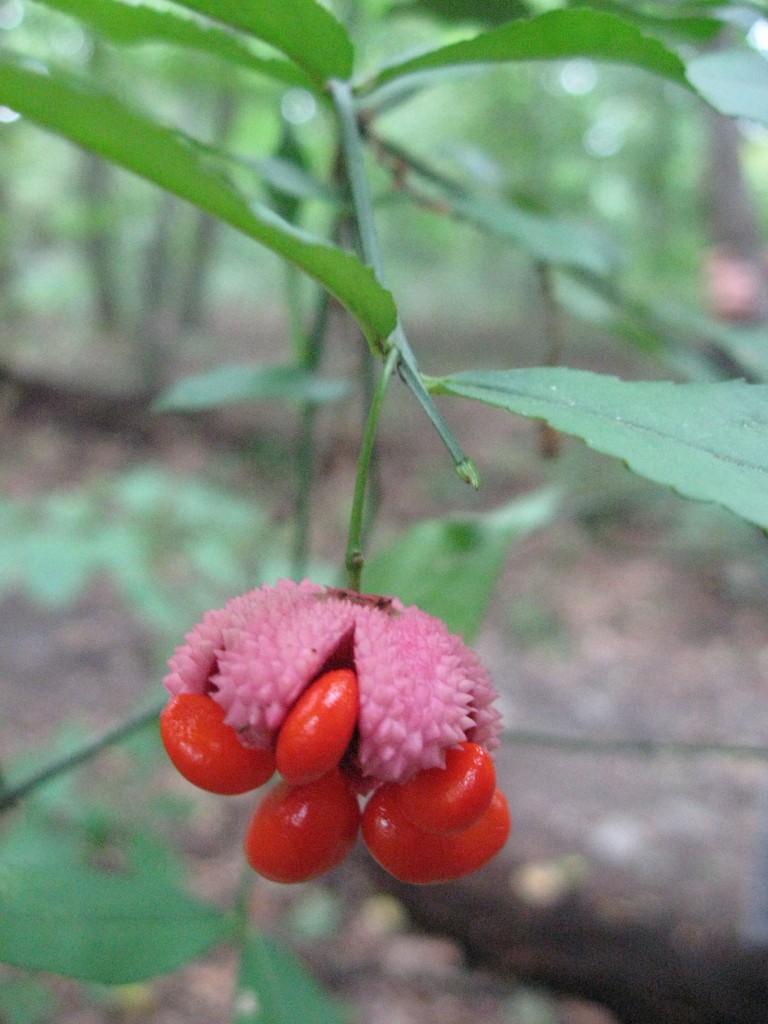
It is heartbreaking sometimes when we walk through a degraded forest in an urban setting. We set out on a sunday looking for good times and a happy woodland only to find weeds from other continents filling up the forest floor, with the remaining native trees cracked, broken and stunted by invasive vines introduced as ornamentals.  Our hearts sink heavier when the shrub layer is dominated by the invasive  Euonymus alatus, an Asian shrub introduced as an ornamental that has jumped the fence and is rapidly expanding into forests all around our region. This shrub shades out the native understory, allowing non-native shade tolerant plants to grow.
The invasive Euonymous alatus, commonly referred to as the Burning Bush also has a native counterpart, the Euonymous Americana! Â This is the Strawberry bush, Â The hearts- bursting -with -love, or our favorite common name, the Hearts-a-bustin’.
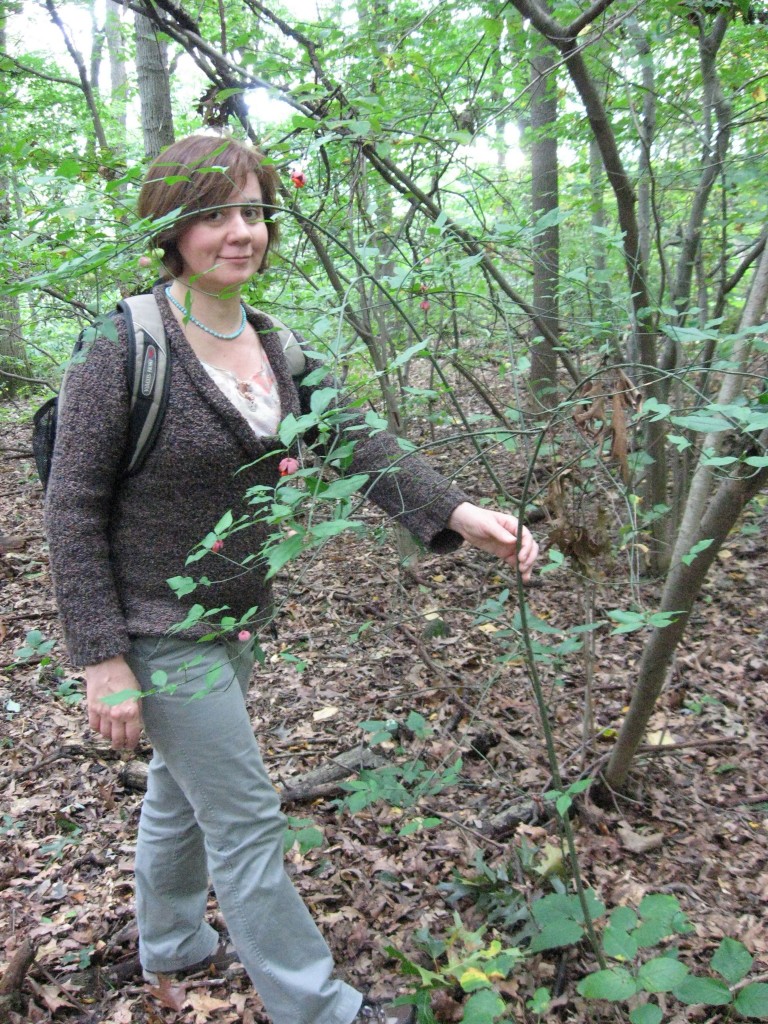
So we are exploring the new and improved trail at Kitchen’s Lane in The Wissahickon Valley Park this fine October afternoon.  We are noting the invasives in this one area that are stifling the forest.  We notice that as we get closer to a neighborhood, the more invasives there are.  Wouldn’t it be great if the folks on this adjacent block could get together and learn about this forest and try to rescue it from this blight?  It is even more heart breaking to see that grass-clippings, Christmas trees, and garden waste are dumped into the forest as if this is somehow improving it.  The garden waste ends up spreading into the forest whatever trendy exotic plant the horticultural industry has people believing is a must-have.  The usual suspects, Pakisandra, English Ivy, Vinca Vine and the Burning Bush. We wonder what used to grow here.  We see some blooming Asters and Goldenrod  trying to make it past the invasives and begin to feel better.
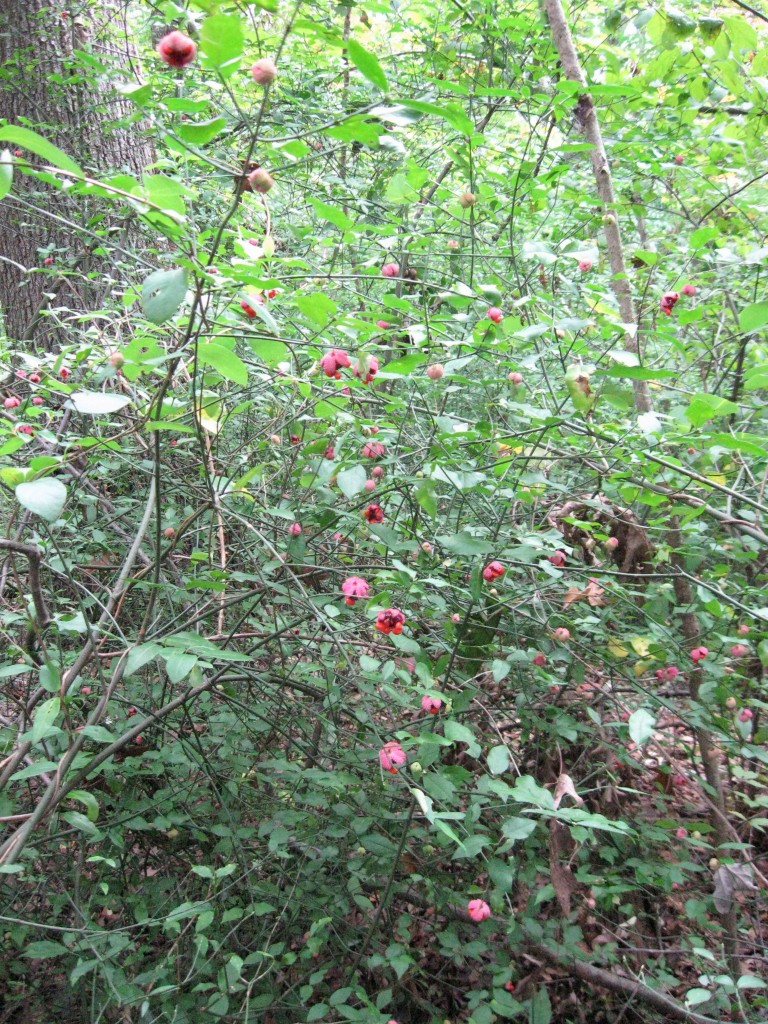
We most certainly did not come here to be depressed about all of the problems, but to see the beauty in nature. Â We must find the pathway of beauty, and that was on our path! Â Suddenly through the thickets we found the Hearts-a-Bustin’, the native Euonymus Americana! Â They were glowing like bright red orbs.
Isabelle, isnt this the native Euonymus…
Immediately upon inspection Isabelle began to sing the song Hearts-a-Bustin’ , written by Billy Joe Shaver as performed by  Jimmie Dale Gilmore.  We found out about this plant through this song, which we heard on Whyy’s Fresh Air program, but had never actually seen one until this special day.
“Hearts-a-bustin’ is a beautiful flower
growing down by the river
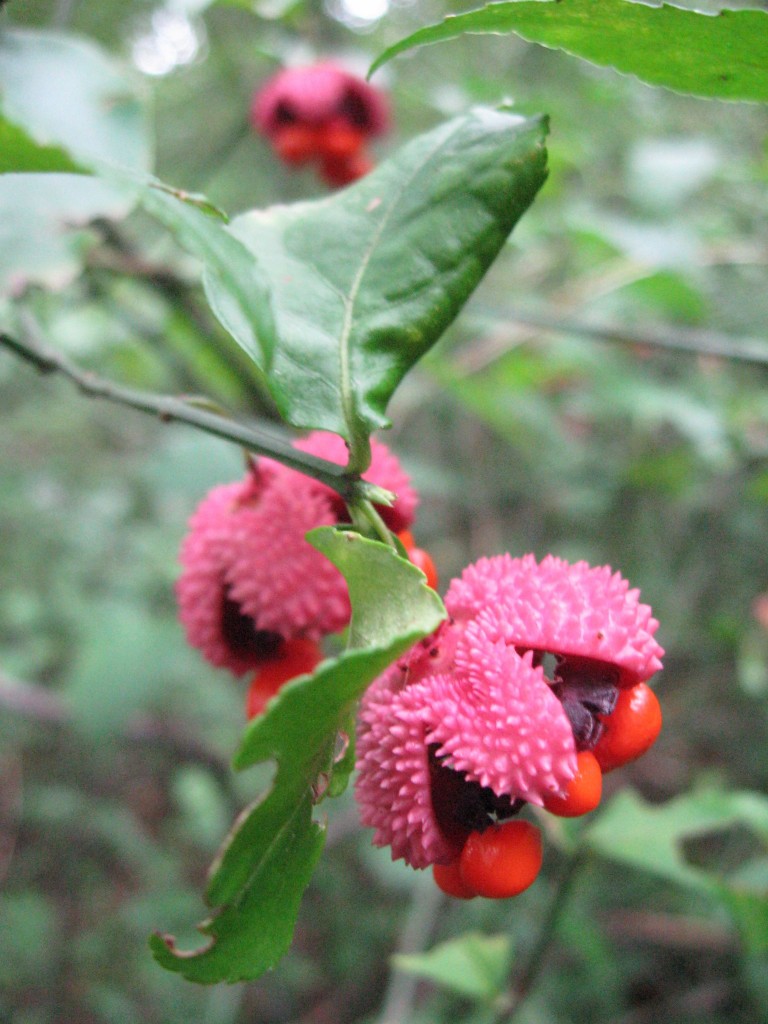
It is the formation of the fruit, not the flower that gives this native shrub its many engaging common names.
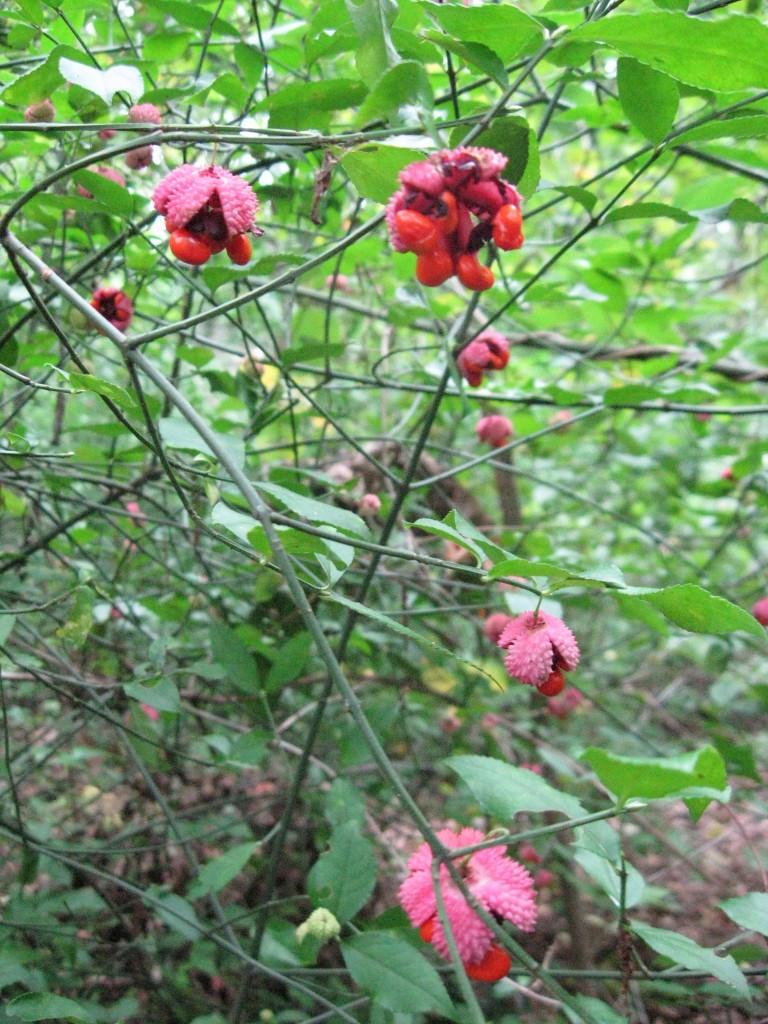
Seeing a whole colony of them was heart-warming.
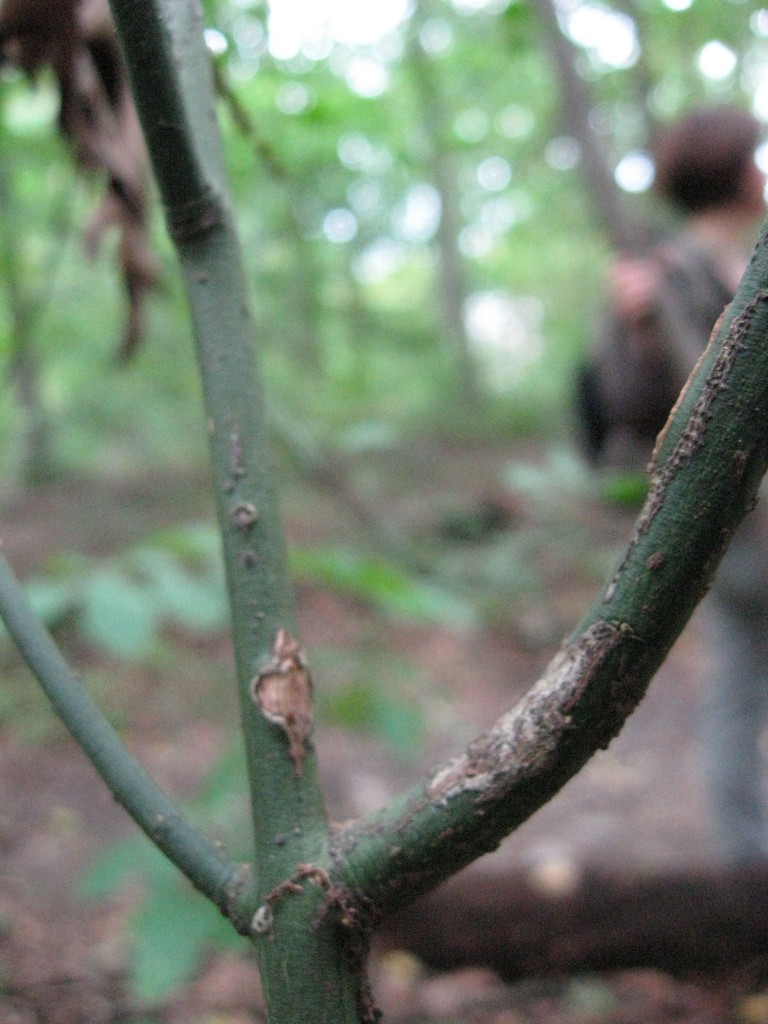
How to tell the difference between the native Euonymus americanus and the invasive exotic Euonymus alatus: Â The top picture is the native americanus. Â It has a green stem. The picture below is the invasive alatus. Â It has corky wings on the green stem, usually at 90 degree intervals around the round stem. Â There are differences in the fruits, flowers and leaves, but the most obvious one is the “wings” on the alatus, which can be attributed to its other common name, the Winged euonymus.
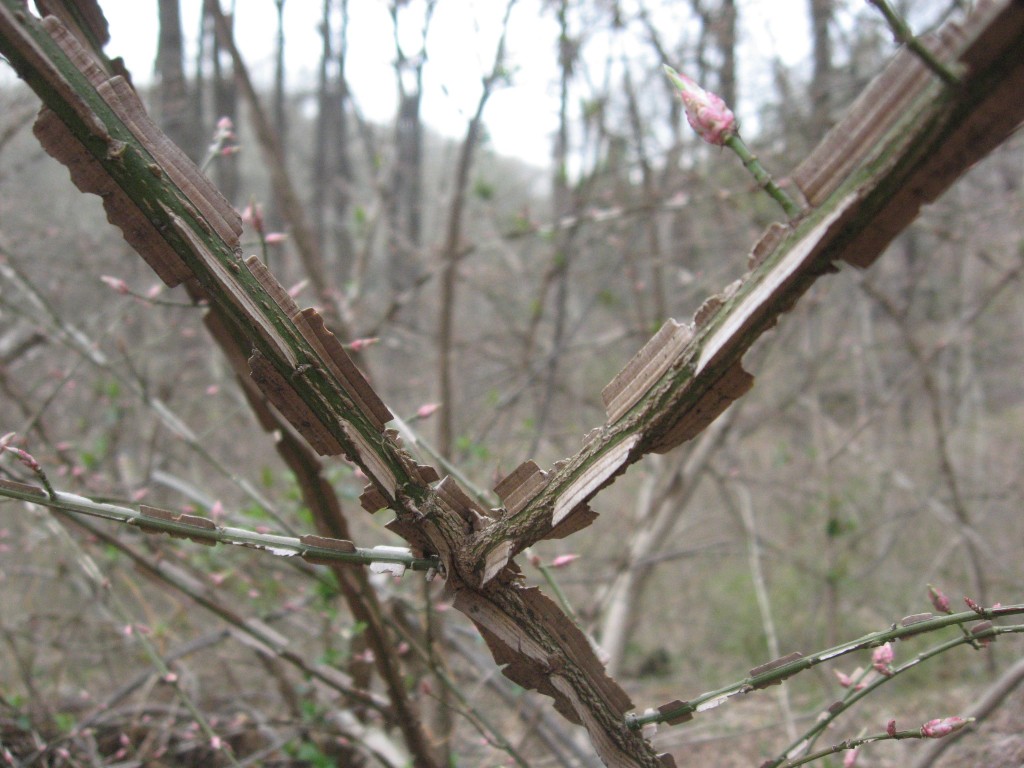
The difference in the fruit is that the native Strawberry Bush has its fruit in a distinct cluster, topped with the  bright pink show-stopping shell, that hints at a strawberry.
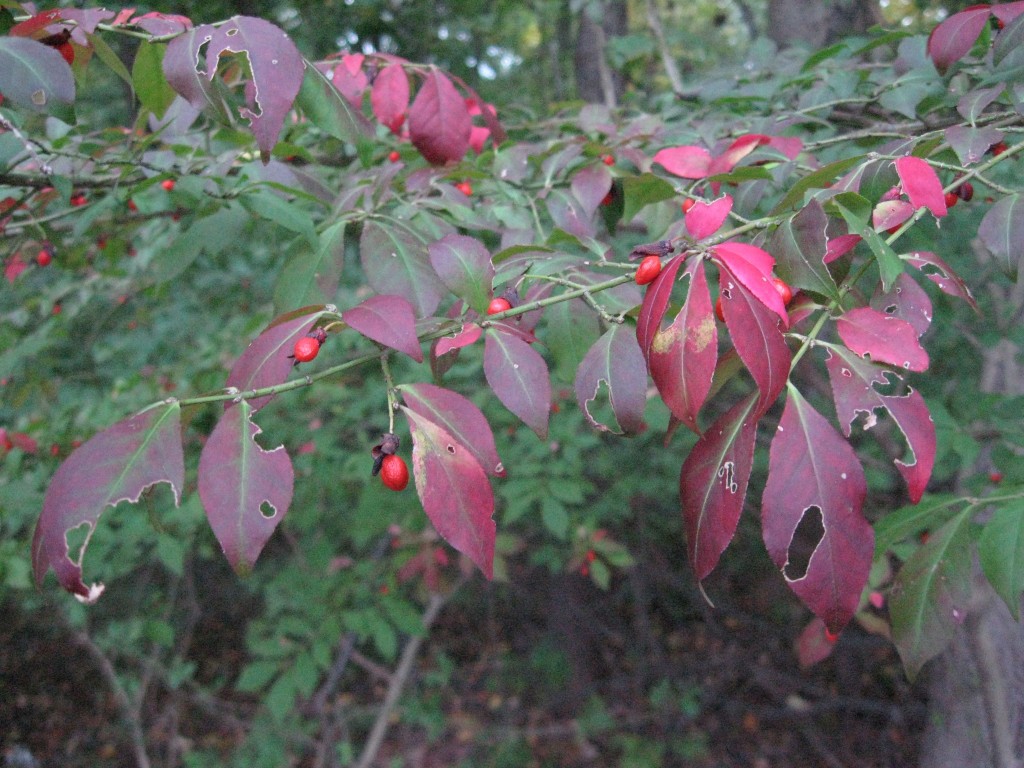
The  non-native Burning Bush displays its fruit as individual red berries.  The leaves, if exposed to sunlight, turn bright red in the fall, hence its common name.  This characteristic has invited interest from the horticultural industry for use as an ornamental.  Having escaped from the parking lot of the interstate rest stop, and gas stations across the northeast, it has invaded many a forest where it does not display any ornamental features. Instead, it grows wild,  takes over and rapidly shades out native plants, creating an ugly impenetrable thicket .
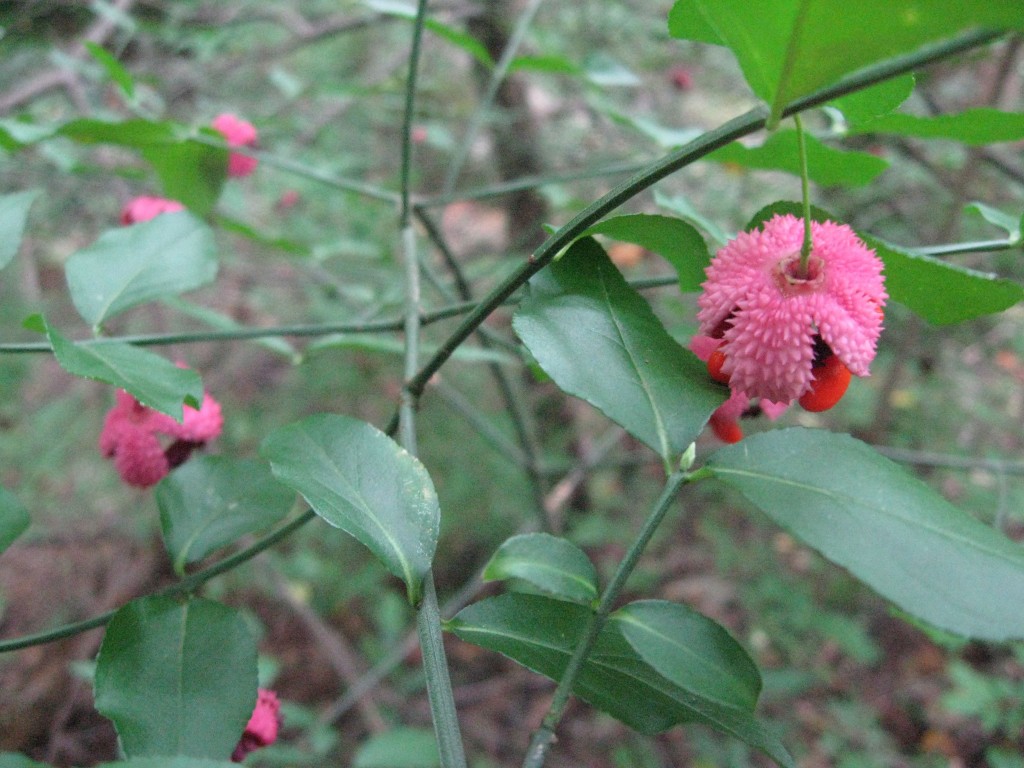
We wish the horticultural industry would promote the native shrub, which we believe is very elegant and stunning.



We were fascinated by these brightly colored spiked flowers all along our recent hike on the trail to the Laurel Falls outside Gatlinburg, Tn. Thank-you for posting the interesting information about such a stunning native shrub.
Karen, it is a beautiful shrub isn’t it? I am glad that you got to experience it in such a beautiful place!
I found these bright pink, spiky, star-shaped pink flowers yesterday on a nature walk through the 8 acre wooded parcel we rent here in Raleigh. I thought they were unusual and stunning, Abd wondered what they were. Today, as I was returning from the mailbox, I noticed another one of these bushes with the same flowers, but these had the little berry-like seeds hanging down from their bottoms. I was impressed by their beauty BEFORE I knew about their dainty ornaments…this just blew me away!
Mother Earth is spectacular and infinite in her creativity as a master designer.
Jennifer, they are great garden specimens too! Usually sold at your local native plant nursery. Get two or a few so they cross pollinate. Thank you for your comment!
I have been trying to identify this plant for some time. The deer have beat a path to my back yard to eat the leaves and fruit.
Sean, I’ve never seen this growing anywhere. Thanks for the photos and description. It’s a pretty nice-looking plant.
Mark, You are welcome. We found this colony on a shaded upland site alongside Beeches and Oaks. We have been looking for more in similar sites in Fairmount Park, but as of yet no luck.